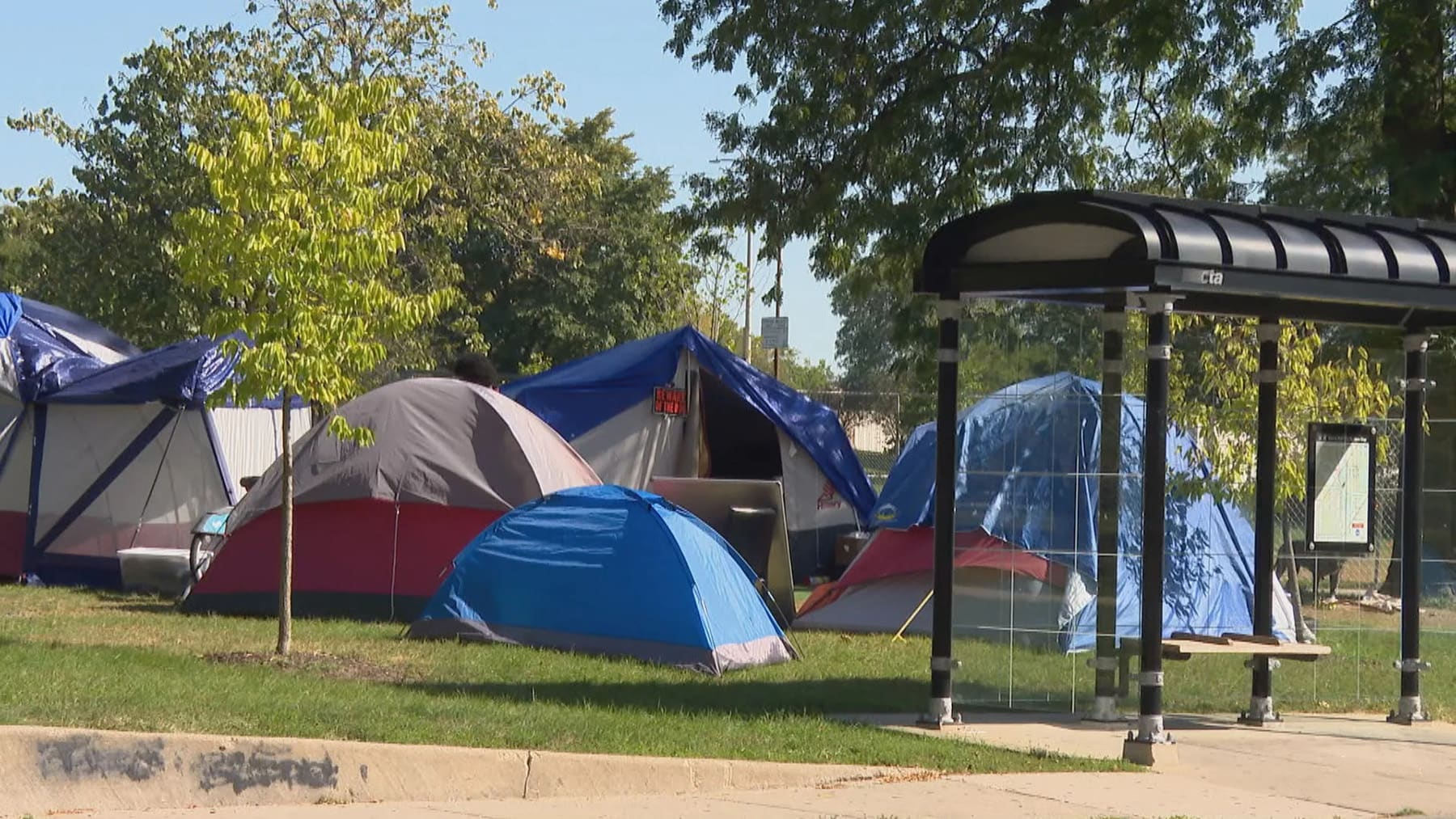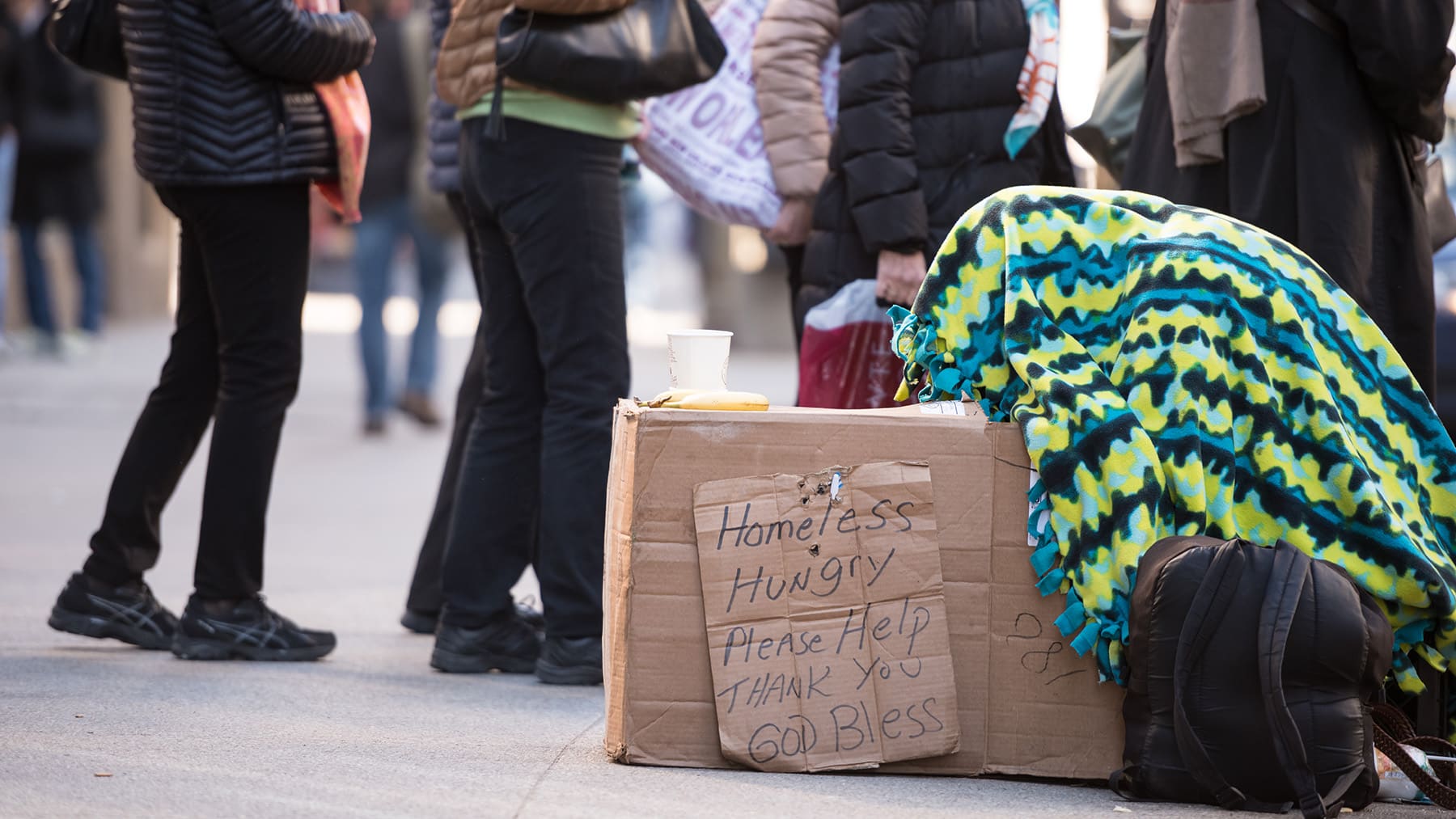Each year, teams in Chicago and across the country gather to survey their local homeless communities.
Called the Point-in-Time count, an effort by the U.S. Department of Housing and Urban Development, it directs questions to the population experiencing homelessness in order to help inform funding and advocacy efforts.
The research is used by organizations across the region and the nation, and is regularly quoted by news and policy organizations. After being compiled, the survey is part of a report presented to the U.S. Congress annually.
But there have been criticisms about the accuracy of the data by some experts and advocates, particularly related to the population it misses. In Chicago, some policy groups say other methods would allow for a more complete picture.
Local agencies budget for services based on the assessment, identifying emerging trends and issues that could arise, measuring progress on addressing homelessness, and tailoring interventions to evolving needs, according to those who work in the field.
When examining homelessness, factors including housing stock, rental prices, health, and social services influence policies. The survey is a critical part of the decision-making process.
This brings up an important consideration: How does the PIT count work, whom does it miss and how does it inform us about the needs of the homeless community in the Chicago area?
'Situations that are constantly changing'
The annual PIT count took place January 25 in Chicago. Locally, it’s a team effort involving hundreds of people from a variety of organizations.
The team includes the Chicago Department of Family and Support Services (DFSS), the All Chicago homelessness nonprofit, which is the backbone organization for the Chicago Continuum of Care, and the Nathalie P. Voorhees Center at the University of Illinois Chicago, which advises the city on the count’s methodology, cleans and analyzes the collected data. Other groups including the U.S. Department of Veterans Affairs, Renaissance Social Services, The Night Ministry, Thresholds, and other city departments and agencies also contribute, according to DFSS Managing Deputy Commissioner Maura McCauley, who oversees the city’s homeless program.
Mayor Brandon Johnson kicked off the count this year. The survey was particularly important over the past two years to support the influx of migrants to the area, McCauley said.
“We have several ways to understand the scale of homelessness in Chicago. There are many definitions of homelessness, and homelessness is not static,” McCauley said. “People are entering homelessness and moving out of homelessness every day.”
The 2023 count was conducted after Texas Gov. Greg Abbott began sending people via bus and plane to the Chicago area and across the country. It counted 5,149 people in shelters and 990 who were unsheltered, reports show. Data and reports from the 2024 PIT count will be released later this year.
The count helps federal and local authorities decide the best way to provide limited resources for services. It helps define priorities and trends. It surveys residents in shelters and without fixed or adequate housing in the city. The count is not a census, tabulating every person, but rather is a figure that helps guide decisions each year.
The numbers last year showed a massive spike in the total population — up more than 58% overall from 2022, and nearly double for the sheltered group, records show. The demographics shifted because of the new asylum seekers, according to the PIT report, with many placed in the Chicago shelter system.
A 2020 study by the U.S. Government Accountability Office found recent PIT data likely underestimated the size of the homeless population. Some total and unsheltered PIT counts have large year-over-year fluctuations, raising questions about some data accuracy, the report said. Records show two of the three recommendations from the study have yet to be implemented fully.
Other factors influenced the numbers locally.
External elements including weather affects the totals. In 2023, the temperature was lower than the previous year, meaning some people might seek covered locations to sleep and potentially be less visible to the survey team, according to the report by DFSS.
The warmer weather was helpful for the 2024 count, McCauley said.
Weather varies in different locations across the country, meaning the effect of various events can have outsized impacts in different ways. Comparing cities to one another is also difficult because each area uses slightly different methodologies to execute each process in the most effective way locally.
The survey also measures the unhoused population on Chicago Transit Authority trains and facilities. This population is difficult to count accurately, and the process can be affected by service disruptions.
In recent years, continuous riders on the Red and Blue Line trains have been a large portion of people experiencing unsheltered homelessness counted on the night of the PIT, according to DFSS. The department, in partnership with CTA, expanded outreach services on those lines in 2023 as part of a $2 million pilot program, according to city officials.
Last year, a derailment on a Red Line train near the Howard station forced the PIT team to make adjustments in final figures, according to the report.
The survey also relies on those encountered during the survey who feel comfortable sharing their housing situation and its causes. It can also miss those who sleep in places hard to access by the survey team. The count also misses some who sleep in hotels or with relatives or friends that night, and who might be unhoused for other parts of the year.
The PIT count also has its blindspots.
The survey may not accurately count those who couch-surf, stay in temporary shelters, or avoid visibility due to safety concerns. It may also miss certain populations, including those living in overcrowded or substandard housing, according to those who work in the field.
“Experiencing homelessness is often very transient. People who are in situations that are constantly changing and evolving,” said Alyssa Phillips, an education attorney at the Chicago Coalition for the Homeless.
She added it’s difficult to get an accurate representation of this vulnerable population if you don’t get regular updates.
There are other data sources that measure this population. A commonly used measurement counts those who qualify for services under the McKinney-Vento Act, which helps track students in temporary living situations.
This group can be distinct from those who sleep in shelters or on the street. The measure of homeless students in schools also doesn’t perfectly capture the unhoused population, with many of those in the McKinney-Vento numbers not included in the PIT count.
The latest figures from the Illinois State Board of Education reported 4.2% of Chicago Public Schools students lacked stable housing, down about one-tenth of a percent from 2022. Numbers for CPS change from month to month. This data is used by organizations providing services in the area including CPS and local public health agencies.
McCauley said the team relaunched a youth count this year over multiple nights and at different times, making sure the experience of the younger population was captured by the count.
PIT data also helps estimate the demographics of different populations. The 2023 count for Chicago reported the largest share of homeless people who were not asylum seekers were Black, while 98% of asylum seekers were Latino.

WTTW News
Another way to count
While the PIT survey measures a part of the overall homeless population on a single night, another local effort looks at a broader timeframe in order to provide a more complete picture for the city.
“Homelessness is not one size fits all, and there are many ways one person can experience it,” Sam Paler-Ponce, the interim associate director of policy at Chicago Coalition for the Homeless, said. “We think all of these living situations should be considered.”
Paler-Ponce is the author of an annual report by the policy organization counting those who use homeless services in the city in a calendar year. Where the PIT count in Chicago showed a downward trend between 2015 and 2022, the coalition’s report detailed a big jump in 2021, the latest year covered by the analysis.
The report by Chicago Coalition for the Homeless measures the population through a combination of records about those using homeless services locally, and supplements it with additional data from the U.S. Census Bureau.
The PIT count is successful at measuring a particular kind of homelessness, and can potentially add context to street outreach initiatives, Paler-Ponce said, but cautioned against using it as the only data because it misses those who aren’t in shelters or easily accessible areas of the city.
“There's a time and a place for the Point-in-Time count, but the use of it should be very limited,” Paler-Ponce said. The estimate by CCH found the PIT survey counted only 10 percent of those using homeless services during the year.
The report says it might undercount the population by missing those who do not use city homeless services, or those who hide their housing status from researchers.
The latest Chicago Coalition for the Homeless report estimated 68,440 experienced homelessness in 2021, a number about 15-times larger than the figure from the PIT count that year.
McCauley said the city uses PIT data as one metric to guide policy, and relies on data from other sources, including the coalition and the city Homeless Management Information System, to inform its decisions.
About the PIT count, McCauley said, “No one is using this as the be-all and end-all, but it is something that is consistent.”
The communication taking place during the annual PIT count creates valuable insights into the population without stable housing. The people sharing their stories and experiences help shape policy for the year in a unique way that informs decisions across the year.
“The survey and the conversations that happened throughout the night really capture important information,” McCauley said. “The demographics of experiencing homelessness, how long they've been experiencing homelessness, what led to their experiences of homelessness, and what their service needs are. It is an opportunity for us to just create awareness.”



